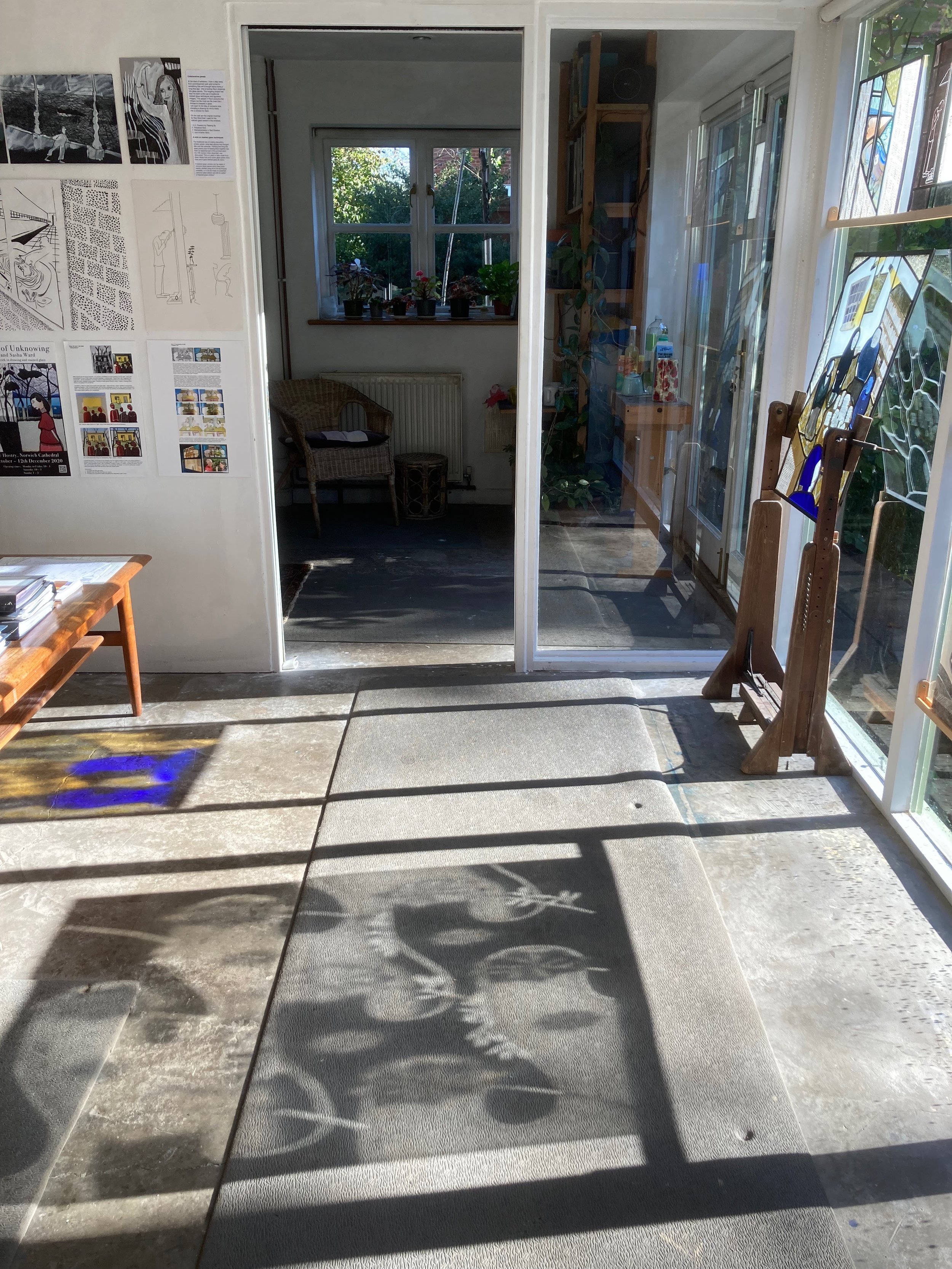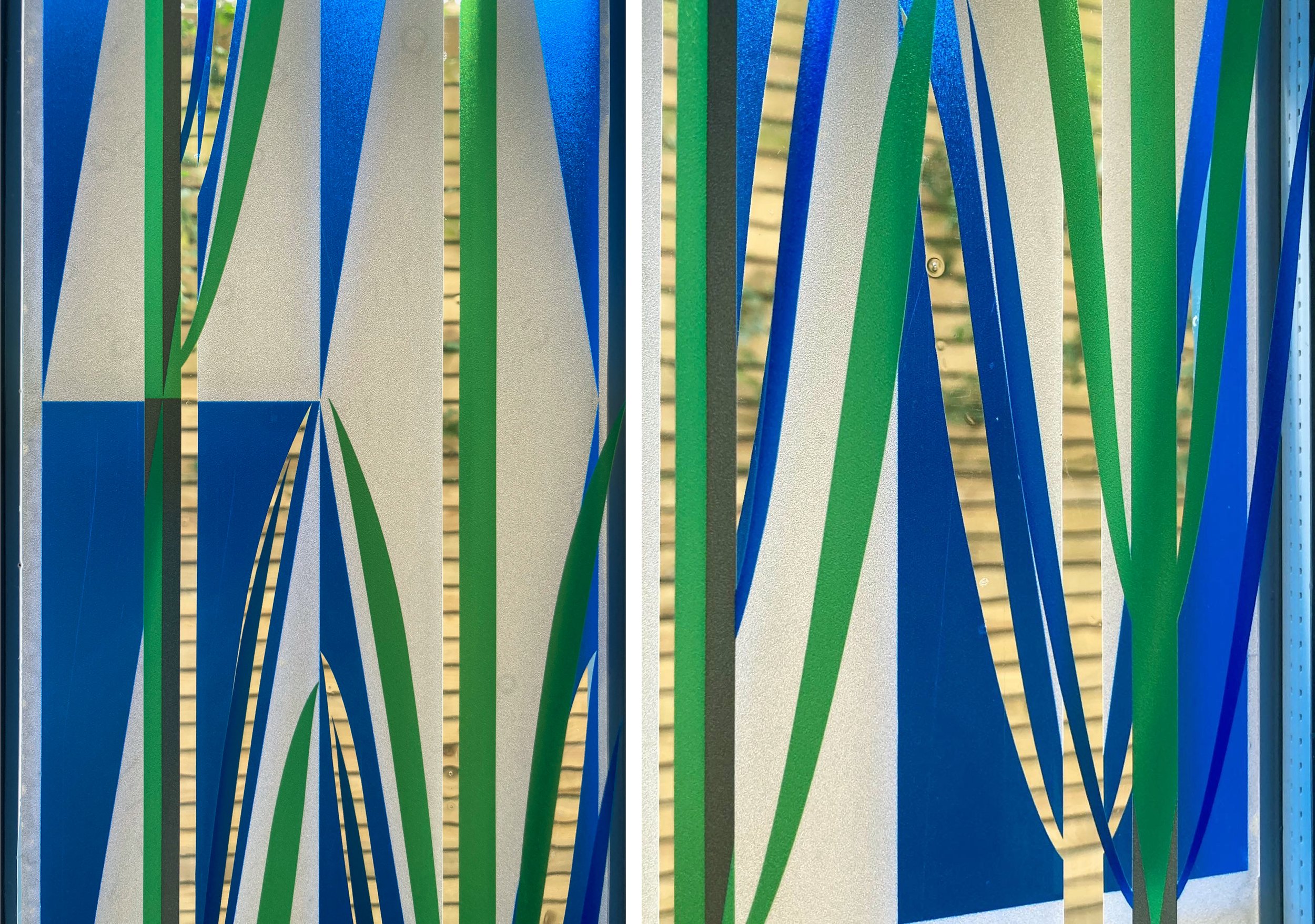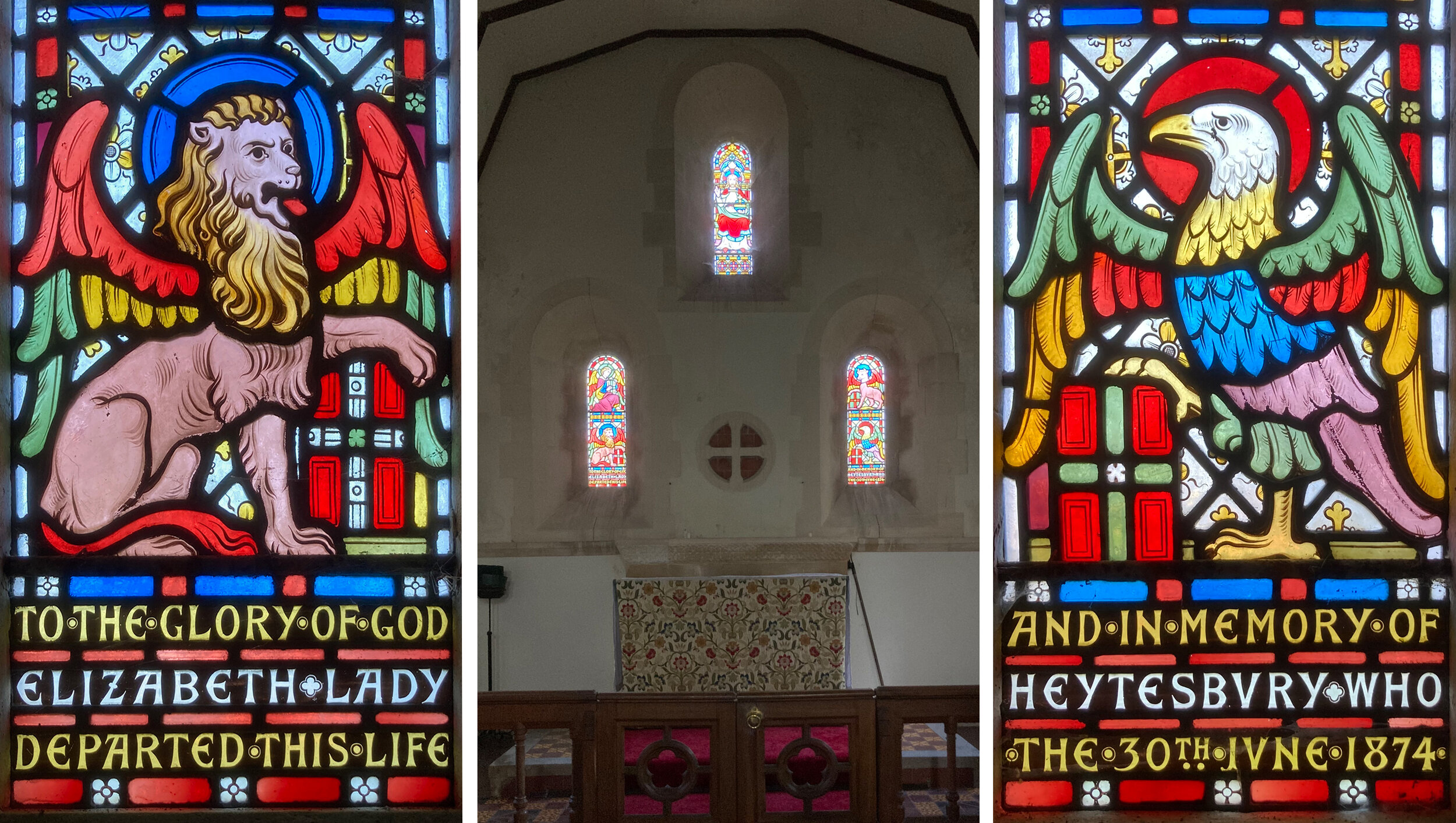Our cellar
When we decorated our cellar Ray set some of his relief plaster panels, made about twenty years ago, into the walls. It may not be obvious why from the photo above, but I like to think of the link these have to altar pieces, particularly those carved in Nottingham alabaster from the fourteenth to sixteenth centuries. We went to St. Peter’s church in Drayton, Oxfordshire to see a set of particularly fine examples of the genre which had survived because they were buried for safety and rediscovered when a vault was dug out in 1814.
Fifteenth century altar piece in St Peter’s church, Drayton, Oxfordshire
There are six scenes crowded with dynamic figures, heads, animals and angels. The panels, some with missing sections, are about 40 cms. tall with traces of paint visible and are mounted in the wall behind an altar. I was so captivated that I couldn’t really be bothered with the (nineteenth and twentieth century) stained glass in the church, but we did find a guide book that told us about a similar Nottingham alabaster altar piece in St. Bartholomew’s at Yarnton, only 15 miles away - a church I knew by name but couldn’t remember why.
The two end panels of the Drayton altar piece
Fifteenth century altar piece in St Bartholomew’s church, Yarnton, Oxfordshire
This altar piece (above) with two of the six panels missing, proved much less exciting than the Drayton one mainly because of the way that the panels are mounted, surrounded by heavy stone, and lit with a dim yellow light. However, every window in the church is filled with fragments of the most fantastic medieval english and continental stained glass, most of it given by alderman William Fletcher, Mayor of Oxford, in 1813. We stayed for a long time, admiring the details and the style of the figures so in keeping with the altar piece; I was delighted not to have my medieval reverie interrupted by any more modern glass here.
Yarnton church: East window (above the Nottingham alabaster altar piece) mainly English C15th and detail.
Two more depictions of the virgin and child (with other painted fragments) in the north windows of Yarnton church.
Details from the north west window of Yarnton church.
Left, The only C15th pieces that are in their original position in the top tracery, north window. Right, Head and birds in the sanctuary window, Yarnton.
To me, the most exciting windows are the reset angels in deep alcoves, lit by sunshine in the south west corner of the church (below). The windows are small enough for the mainly fifteenth century pieces to make a complete picture in each one, with some pattern, some objects ( a wheel or a surveillance camera, a football or a flower?) some border pieces, some incongruous bird and animal segments, fritillaries and bluebells. The faces that loom out of the bottom of the right hand window (bottom picture) have a particular other worldly quality - there is nothing in the centuries of stained glass painting that I would rather see.
Angel windows in the south wall of Yarnton church.
The two angel windows in Yarnton church.
Details of painted glass in the bottom of the left hand angel window
Detail from the bottom of right hand angel window


































